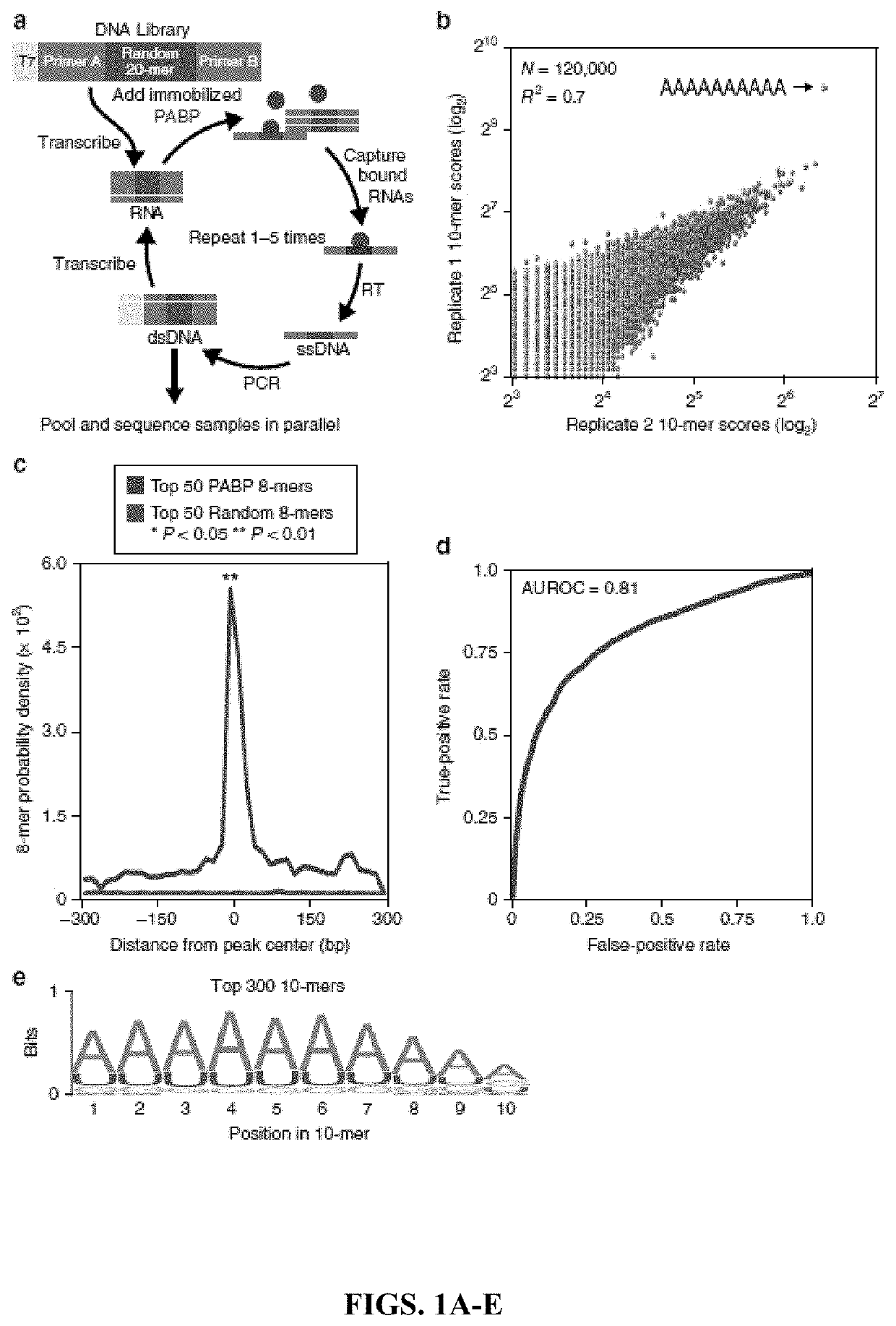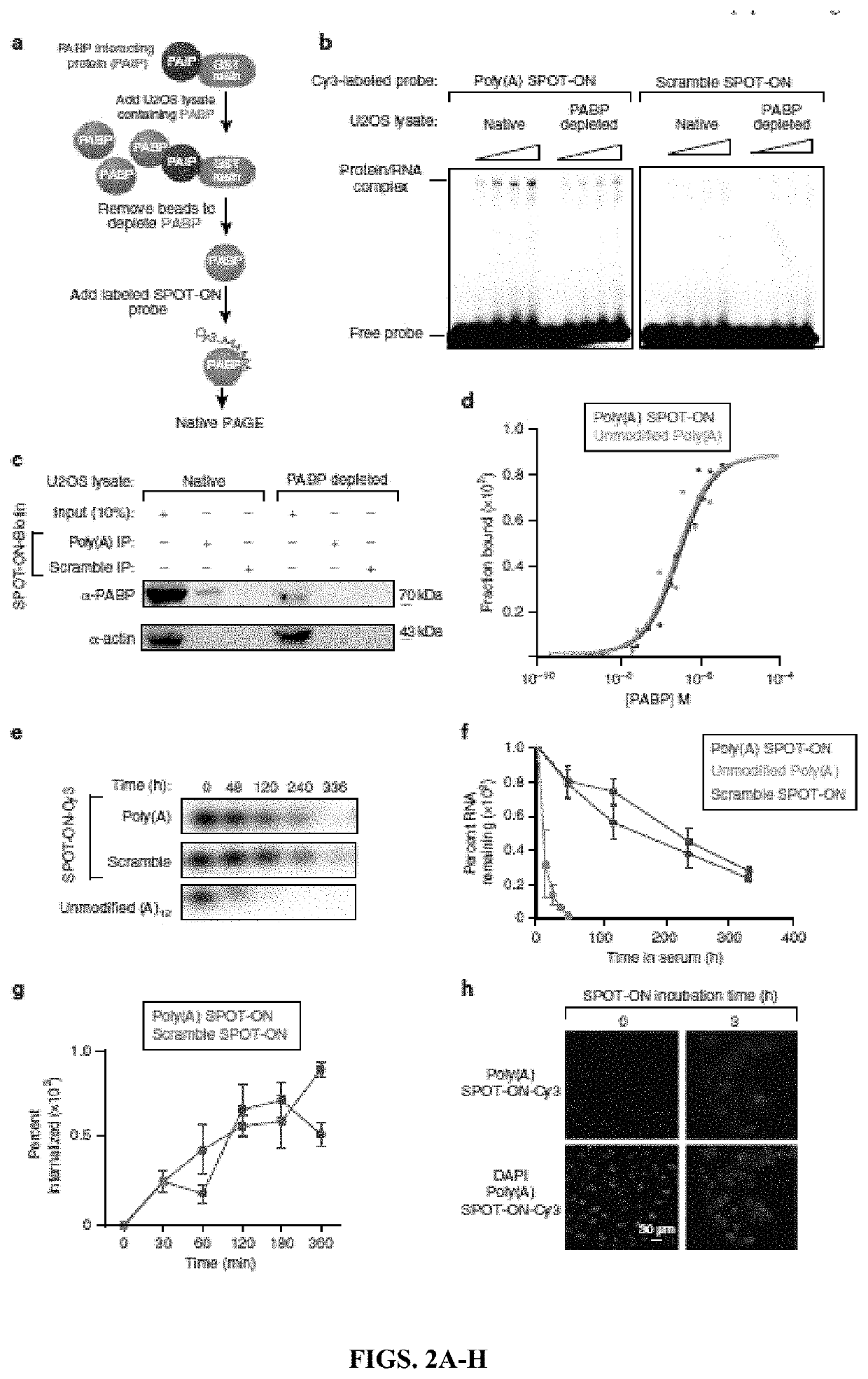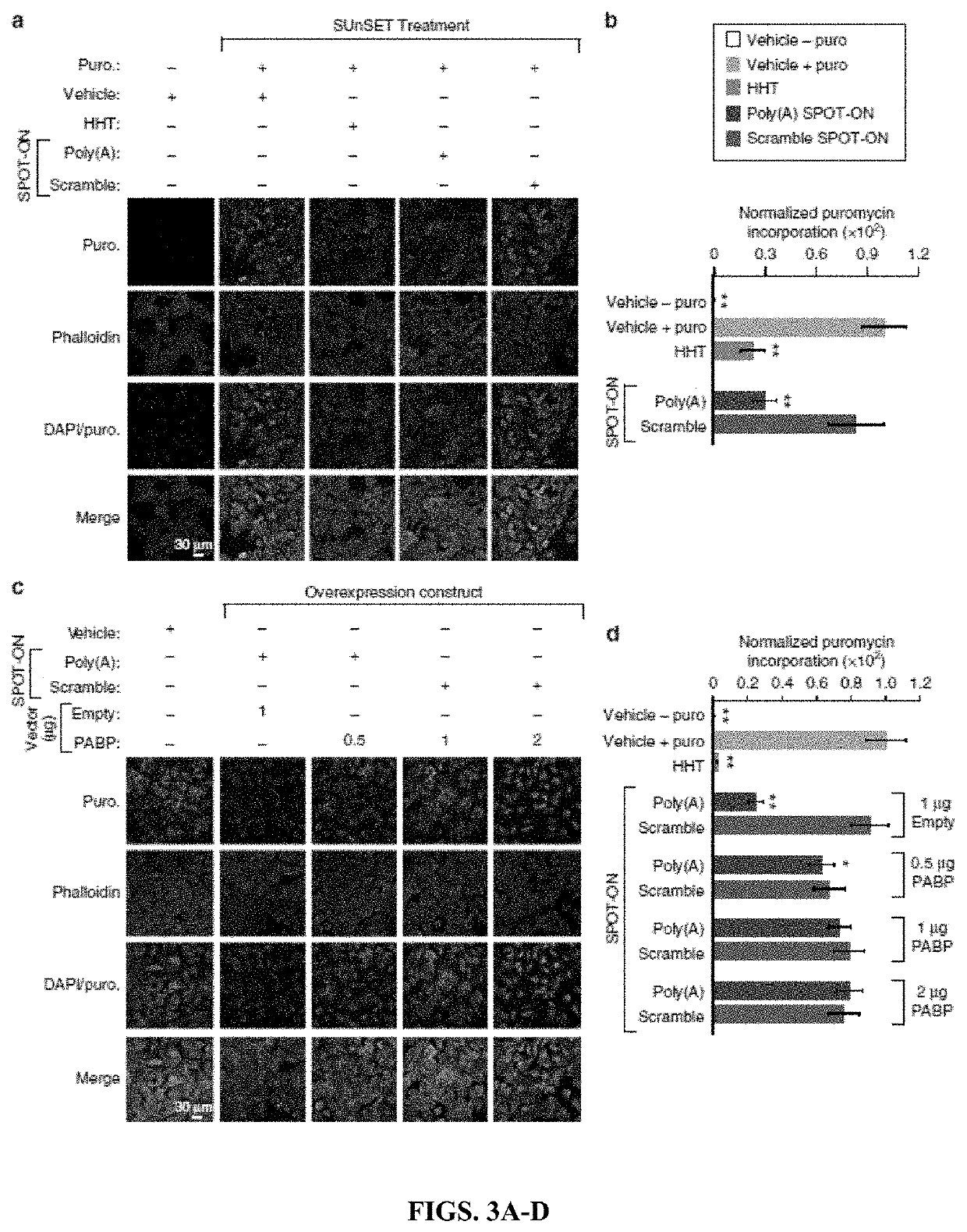Inhibition of poly(a) binding protein and the treatment of pain
a technology of binding protein and poly(a) protein, which is applied in the direction of anti-inflammatory agents, biochemistry apparatus and processes, drug compositions, etc., can solve the problems of rna's ephemeral nature, and achieve the effects of reducing rna toxicity, reducing rna toxicity, and reducing rna toxicity
- Summary
- Abstract
- Description
- Claims
- Application Information
AI Technical Summary
Benefits of technology
Problems solved by technology
Method used
Image
Examples
example 1
and Methods
[0152]In Vitro Selection and High-Throughput Sequencing and Sequence Specificity Landscapes (SEQRS).
[0153]SEQRS was conducted as described with minor modifications on PABPC162. The initial RNA library was generated from transcription of 1 μg of double-stranded DNA using the AmpliScribe T7-Flash Transcription Kit (Epicentre). DNA was removed through incubation with Turbo DNAse. Two hundred nangorams of RNA was added to 100 nM PABPC1 immobilized onto magnetic glutathione S-transferase (GST) resin (Fisher). Binding reactions were conducted in 100 μL of SEQRS buffer-50 mM HEPES, pH 7.4, 2 mM ethylenediaminetetraacetic acid (EDTA), 150 mM NaCl, 0.1% NP40, 1 mM dithiothreitol (DTT), 200 ng yeast transfer RNA (tRNA) competitor, and 0.1 U of RNase inhibitor (Promega). Magnesium and other metals catalyze non-specific cleavages in RNA; thus, a small amount of EDTA was included to enhance RNA integrity. An additional implication of EDTA in SEQRS is reduced preservation of structured...
example 2
[0193]Unbiased Analysis of PABP Specificity.
[0194]The inventors' experiments focus on the major cytoplasmic PABP isoform PABPC1 (henceforth referred to as PABP) as it is the most abundant isoform based on high-throughput sequencing of the dorsal root ganglia (DRG) (data not shown) (Gerhold et al., 2013). Furthermore, the inventors were unable to detect a clear signal of the second most abundant isoform in the DRG by immunofluorescence (data not shown). They examined the specificity of PABP for all possible 10-base sequences using in vitro selection, high-throughput sequencing of RNA, and sequence specificity landscapes (SEQRS; FIG. 1a). This versatile approach has been successfully applied to RNA-binding proteins that recognize structured or linear elements and protein complexes (Campbell et al., 2012; Campbell et al., 2014; Weidmann et al., 2016). PABP produced a highly reproducible pattern of enrichment (FIG. 1b). The most enriched sequence was an adenosine homopolymer. However, t...
example 3
n
[0216]These experiments permit four major conclusions. First, RNA-based SPOT-ON “decoys” can inhibit RNA-protein interactions and are functional in vivo. Second, PABPs are broadly distributed in the nociceptive pathway and play critical roles in protein synthesis. Third, inhibition of PABPs with SPOT-ONs can robustly impair pain behavior. Fourth and finally, PABP inhibition diminishes inflammation following incision or intraplantar capsaicin administration.
[0217]The inventors determined the sequence preferences of a conserved translation factor and applied this information toward the generation of a competitive inhibitor RNA. This constitutes, to the best of the inventors' knowledge, the first such attempt to disrupt RNA-protein interactions through the use of chemically-stabilized mimetics. This approach is particularly well suited to PABPs given their essential requirement in basal eukaryotes such as yeast and in animals. SPOT-ONs are rapidly taken up by cells and lack overt sign...
PUM
| Property | Measurement | Unit |
|---|---|---|
| equilibrium dissociation constants | aaaaa | aaaaa |
| equilibrium dissociation constants | aaaaa | aaaaa |
| period of time | aaaaa | aaaaa |
Abstract
Description
Claims
Application Information
 Login to View More
Login to View More - R&D
- Intellectual Property
- Life Sciences
- Materials
- Tech Scout
- Unparalleled Data Quality
- Higher Quality Content
- 60% Fewer Hallucinations
Browse by: Latest US Patents, China's latest patents, Technical Efficacy Thesaurus, Application Domain, Technology Topic, Popular Technical Reports.
© 2025 PatSnap. All rights reserved.Legal|Privacy policy|Modern Slavery Act Transparency Statement|Sitemap|About US| Contact US: help@patsnap.com



